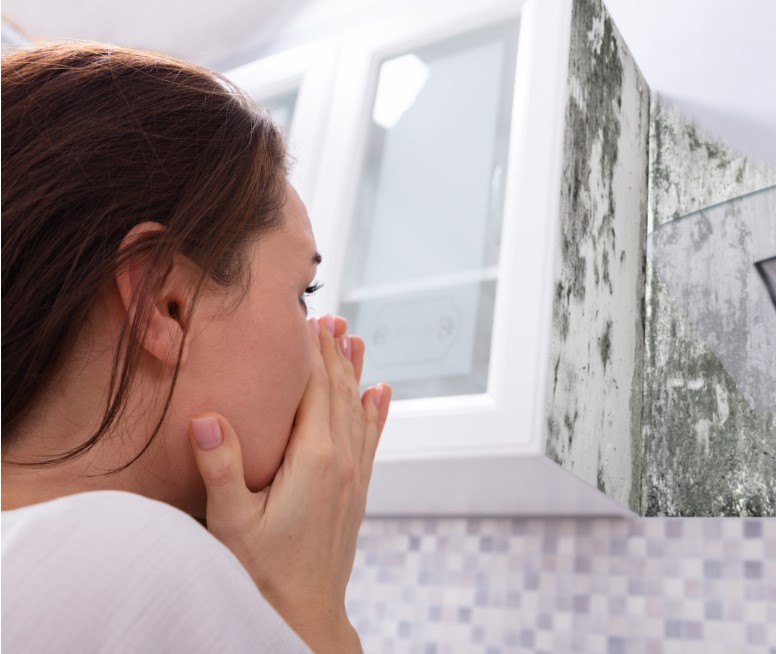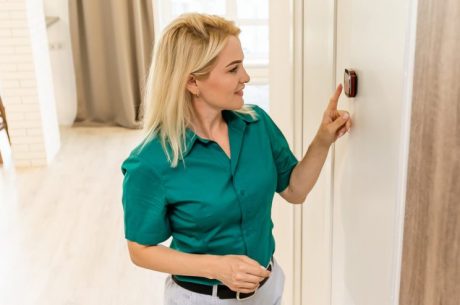Water damage in your home is more than just an immediate problem. The real danger is often what comes after—mold growth.
Mold can start growing within 24-48 hours after water damage. It thrives in moist environments, making water leaks a common culprit.
Ignoring mold growth can lead to serious health risks. These include respiratory issues, allergic reactions, and even long-term health problems.
In this article, we’ll delve into the health risks of ignoring mold growth after water damage. We’ll also discuss the importance of timely mold removal and remediation.
Understanding Mold Growth After Water Damage
Mold is a type of fungus that grows in damp environments. It reproduces by releasing spores into the air.
When these spores land on a moist surface, they begin to grow. This is why water damage often leads to mold growth.
The Science of Mold in Moist Environments
Mold needs three things to grow: moisture, a food source, and the right temperature.
- Moisture: Mold thrives in damp conditions. This is why water leaks often lead to mold growth.
- Food source: Mold can feed on many materials found in homes, such as wood, carpet, and insulation.
- Temperature: Most molds prefer temperatures between 60 and 80 degrees Fahrenheit, which is the typical temperature range in most homes.
How Quickly Can Mold Grow After Water Damage?
Mold growth can start within 24-48 hours of water damage. This is why it’s crucial to address water leaks promptly.
If left unchecked, mold can spread rapidly, leading to more extensive property damage and health risks.
Health Risks Associated with Mold Exposure
Mold exposure can lead to a variety of health issues. These range from mild allergic reactions to severe respiratory problems.

People with asthma or immune system disorders are particularly at risk. They may experience more severe symptoms when exposed to mold.
Common health problems associated with mold exposure include:
- Coughing and sneezing
- Itchy eyes, nose, and throat
- Skin rashes
- Headaches and fatigue
- Difficulty breathing
Respiratory Issues and Allergic Reactions
Inhaling mold spores can trigger allergic reactions. These reactions often include sneezing, runny nose, red eyes, and skin rash.
People with asthma may experience asthma attacks when exposed to mold. This can lead to difficulty breathing and other serious health complications.
Long-Term Health Implications of Mold
Long-term mold exposure can lead to serious health problems. These include chronic lung illnesses and other respiratory conditions.
In severe cases, mold exposure can lead to hypersensitivity pneumonitis, a serious lung disease that can cause permanent lung damage if not treated promptly.
Identifying Mold in Your Home
Mold is not always visible to the naked eye. It can hide in walls, under carpets, and in other hard-to-reach places.
However, several signs can indicate the presence of mold in your home:
- Visible mold growth
- Musty odors
- Health symptoms such as coughing, sneezing, and headaches
Signs and Symptoms of Mold Presence
Visible mold growth is the most obvious sign of a mold problem. This can appear as spots or patches of various colors, including black, white, green, or brown.
Another common sign is a musty odor. If your home smells musty or earthy, it could be a sign of hidden mold growth.
When to Seek a Professional Mold Inspection
If you suspect mold growth in your home, seek professional help. DIY mold removal can be risky and may not address the root cause of the problem.
Professional mold inspectors have the tools and expertise to identify hidden mold and moisture issues. They can provide a detailed report and recommendations for mold remediation.
Effective Mold Removal and Remediation Strategies

Addressing mold growth involves more than just cleaning visible mold. It requires a comprehensive approach that includes both mold removal and remediation.
This process aims to remove mold and fix the conditions that allowed it to grow in the first place.
The Difference Between Mold Removal and Mold Remediation
Mold removal refers to the process of physically removing mold from a property. However, this alone does not address the underlying moisture problem that led to the mold growth.
On the other hand, mold remediation involves addressing the root cause of the mold problem. It includes steps to repair water damage, control moisture, and prevent future mold growth.
Professional Mold Remediation Process
The professional mold remediation process begins with a thorough mold inspection. This helps identify all areas of mold growth, including hidden mold.
After the inspection, professionals use specialized equipment and techniques to safely remove mold and repair the conditions that allow it to grow. This may involve fixing water leaks, improving ventilation, and implementing moisture control strategies.
Preventing Future Mold Growth Through Moisture Control
Preventing mold growth is largely about controlling moisture in your home. Remember, mold thrives in damp environments, so keeping your home dry is key.
Implementing moisture control strategies can help prevent future mold growth. These may include:
- Using dehumidifiers in damp areas
- Ensuring proper ventilation in bathrooms and kitchens
- Fixing water leaks promptly
- Regularly inspecting areas prone to water damage
Tips for Maintaining a Mold-Free Environment
Maintaining a mold-free environment requires regular effort. It’s not just about addressing existing mold, but also about preventing future growth.
Regular inspections, especially in areas prone to water damage, can help catch mold growth early. Additionally, maintaining indoor humidity levels between 30-50% can inhibit mold growth. Remember, a proactive approach to moisture control is your best defense against mold.
Conclusion: The Importance of Addressing Mold Growth Promptly
Ignoring mold growth after water damage can lead to serious health risks and property damage. Prompt action, professional mold remediation, and effective moisture control strategies are crucial. Remember, a mold-free home is not just healthier, but also contributes to maintaining the value and integrity of your property.
For expert mold remediation or water damage restoration services in St. Augustine, contact PuroClean Emergency Restoration Services.



